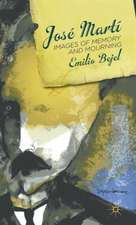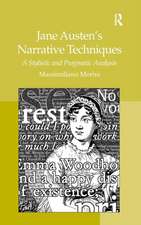Victorian Fiction and the Cult of the Horse
Autor Gina M. Dorréen Limba Engleză Paperback – 19 oct 2016
| Toate formatele și edițiile | Preț | Express |
|---|---|---|
| Paperback (1) | 338.33 lei 6-8 săpt. | |
| Taylor & Francis – 19 oct 2016 | 338.33 lei 6-8 săpt. | |
| Hardback (1) | 819.09 lei 6-8 săpt. | |
| Taylor & Francis – 7 noi 2006 | 819.09 lei 6-8 săpt. |
Preț: 338.33 lei
Preț vechi: 386.77 lei
-13% Nou
Puncte Express: 507
Preț estimativ în valută:
64.74€ • 67.90$ • 53.89£
64.74€ • 67.90$ • 53.89£
Carte tipărită la comandă
Livrare economică 01-15 aprilie
Preluare comenzi: 021 569.72.76
Specificații
ISBN-13: 9781138263093
ISBN-10: 1138263095
Pagini: 192
Dimensiuni: 156 x 234 x 17 mm
Greutate: 0.45 kg
Ediția:1
Editura: Taylor & Francis
Colecția Routledge
Locul publicării:Oxford, United Kingdom
ISBN-10: 1138263095
Pagini: 192
Dimensiuni: 156 x 234 x 17 mm
Greutate: 0.45 kg
Ediția:1
Editura: Taylor & Francis
Colecția Routledge
Locul publicării:Oxford, United Kingdom
Cuprins
Contents: Introduction: All the queen's horses: Victorian culture and 'the definition of a horse; Handling the 'iron horse': Dickens, travel, and the derailing of Victorian masculinity; Horsebreaking and homemaking: horsey heroines and destabilized domesticity in the sensation fiction of Mary E. Braddon; Horses and corsets: Black Beauty, dress reform, and the fashioning of the Victorian woman; Reading and riding: late-century aesthetics and the cultural economy of the turf in George Moore's Esther Waters; Epilogue: Urban ironies and the modern mind: horses after Victoria; Bibliography; Index.
Notă biografică
Gina M. Dorré is a Lecturer in the English Department at the University of Nevada, Reno, where whe teaches writing and literature.
Recenzii
’... impressive work... Dorré combines a wealth of cultural-historical material with innovative readings of nineteenth-century texts... make[s] significant contributions to our understanding of the place of the animal in Victorian literature and culture.’ Journal of Victorian Culture ’... this is a thought-provoking and worthwhile book, alerting us especially to the vitality and complexity of Victorian fiction, and its exuberant use of metaphor as a descriptive, structural and socially-critical device. What Dorré analyzes as the 'displacement' of gender and class anxieties onto the body of the horse, produces a rich and complex symbolic language that she has in part decoded for us.’ Anthrozoös
Descriere
The ubiquity of horses in literary texts, visual media, and other cultural documents indicates a vibrant cult of the horse during the Victorian Period. Treating the novels of Charles Dickens, Elizabeth Braddon, Anna Sewell, and George Moore, Gina M. Dorré shows how discourses concerning horses and horse care reveal anxieties related to industrialization and technology, constructions of gender and sexuality, class conflict and mobility, and national "progress" and imperial expansion.

















